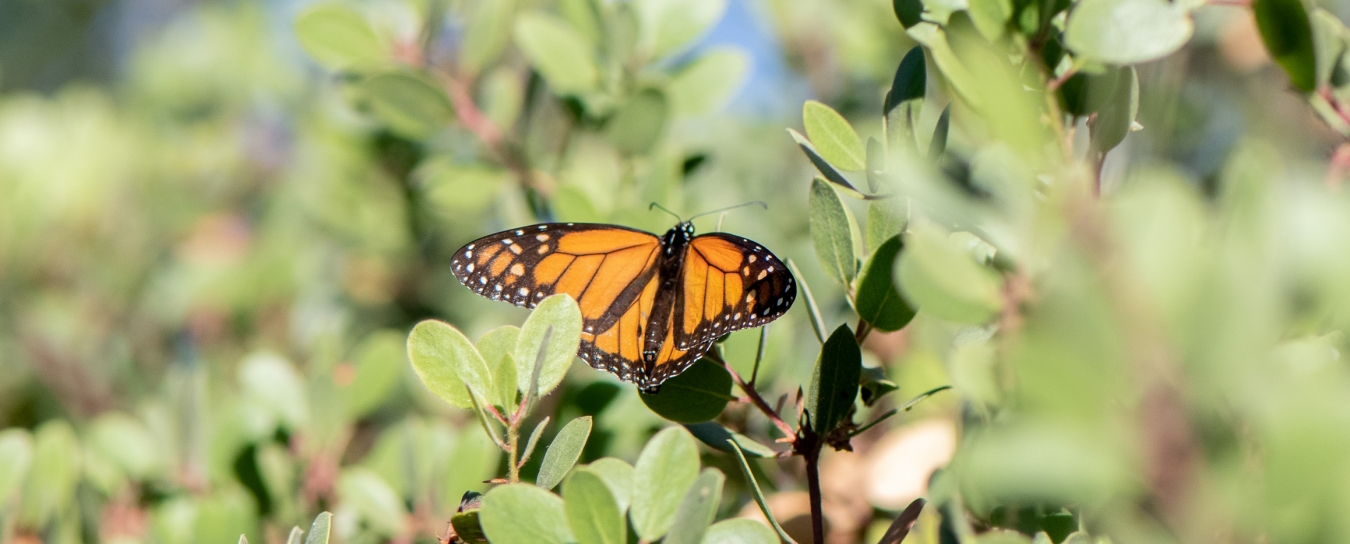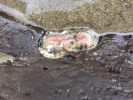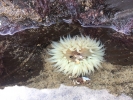
Invertebrates
See our handy guide to critters found in local homes and our Central Coast Butterfly FAQ. Browse the insects and other terrestrial arthropods we’ve identified. Check out local marine invertebrates, particularly bivalve mollusks and intertidal organisms.
- Anthropology
- Rocks & Fossils
- Invertebrates
- Vertebrates
- Botany
- Astronomy
- Fungi
- General
- Recently Asked
Sea anemones in surprising colors
I saw these blonde and pink anemone friends at Goleta Beach, in addition to the regular blue ones, and I was wondering what causes their various colors? And can anemones be phosphorescent?


Curator Response
Hi Julian,
Symbiotic algae have a large part to play in anemone color. I’m guessing this "blonde" anemone was in a more covered/shaded area, and therefore had less sunlight for algae to thrive. Anemones also have variations of their own natural pigments, so this guy is probably naturally pale on its own and doesn’t have much symbiotic algae.
The pink color is really cool! I think this may be pigment, rather than algae. I know some species in the genus Anthopleura have pink tips on their tentacles, but this is indeed very pink. I don’t believe the Strawberry Anemones, Corynactis californica, have algae symbionts, and therefore those are pigmented pink. In our local area, an anemone like this would probably be either Anthopleura sola (Sunburst Anemone) or Anthopleura elegantissima (Aggregating Anemone). It’s hard to tell without seeing the oral disc, which would be visible if the tentacles were opened up. It seems rather small, which would be more like A. elegantissima, but it is solitary, so it may also be A. sola. As their name suggests, Aggregating Anemones are usually found in groups.
Anemones can fluoresce, and have fluorescent proteins that allow them to do this. Fluorescence and phosphorescence are similar in that they are both forms of luminescence, but fluorescence has a much shorter time span. It stops pretty much immediately after the light source is depleted. Phosphorescence, on the other hand, continues after the light source is no longer present.
I believe the functions of these proteins are to provide protection from the sun and boost photosynthesis. However, it and seems there are deep-sea anemones that contain fluorescent proteins as well, as you can see from this medical research. There are many evolutionary mysteries to be solved regarding deep-sea organisms (like why some have colors or patterns that don't seem to be of any use in their natural environment).
If you want to see fluorescing anemones from home, here's a video of cool UV photos from the Vancouver Aquarium. In addition to anemones, it also includes corals.
Stay curious, Invertebrate Zoology Collection Manager Vanessa Delnavaz, M.A.


